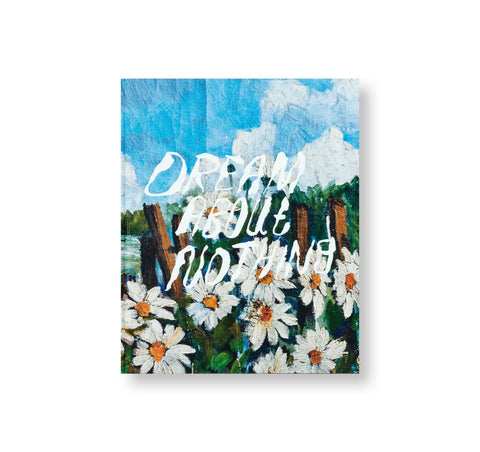SEABIRD by Bobby Doherty
アメリカ人フォトグラファー、ボビー・ドハティ(Bobby Doherty)の作品集。2014から2018年にかけて撮影された作品で構成されてた一冊。作者の写真は実にはっきりと核心をついている。真っ赤なテーブルクロス上の磨き上げられたグラスや柔らかい葉の上に落ちたみずみずしい雫など、それらのイメージは極端に単純化されているように一見思われる。物や状況は煮詰められ、その基礎成分だけが後に残っている。作者は、日常における深い意味をもつものと無意味なもの、その両方を同じ分だけ瞬時にイメージの中に閉じ込める技量を持っており、例えば感情に語りかけてくる牧歌的な風景やポートレイトが街中のごみや動物、食べ物、花と隣り合わせに配置されている。最後まで目を通していくと、小さいものと大きいもの、ありふれたものと崇高なものがページを超えて手を握り合い、その作品からは写真的な平等主義を感じることができる。作者は元来静物写真が評価されてきたが、自らのイメージをカテゴリーに当てはめたり過度に分析することは意図的に避けている。結束や過去を顧みるといった観点は気にも留めず、ありとあらゆるものを常に撮り続けていたいという衝動に突き動かされて制作する作家の系統に属する者として自らを位置付けている。写真に対するこのような開かれた感覚の中で、本作のイメージは全体として一つの人間味溢れるタペストリーとなり、気分の変化や感情の動きがそれとなく示されている。この作品は、ホールマーク社のグリーティングカード的なキッチュさから歪んだユーモアが光る並置へ、型にはまったものから不条理なものへと、瞬きしている間にその表情を変えていく。このような遊びや緩さが残されているのにも関わらず、イメージの多くは法医学的といっても良いほど緻密に制作されており、色や形などあらゆるディテールに注意が向けられる。作者のカメラを通じ、人間と自然が渾然一体となった世界は平面に置き換えられ、いかにも楽し気で臆面もなくセンチメンタルな、好奇心で輝くイメージとなる。
Seabird is a book of moments observed by American photographer Bobby Doherty between 2014 and 2018. Doherty makes photographs that get to the point. At first glance, some of the photographs in Seabird feel gloriously oversimplified, objects and situations simmered down to their bare constituent elements; the clearest glass on the reddest tablecloth, the wettest dew on the softest leaf. Doherty is quick to embrace both the meaningful and meaningless of everyday life with equal measure: emotive, bucolic landscapes and portraits sit alongside city trash, animals, food and flowers. What comes out in the end feels like a photographic egalitarianism, where the tiny and the huge, the mundane and the sublime, shake hands across pages. Despite his acclaim as a still-life photographer, Doherty is keen to avoid categorisation or to overanalyse his images, placing himself in a lineage of those with a powerful urge to make photographs, consistently and extensively, without concern for cohesion or retrospection. Within this openness, Seabird becomes an identifiably human tapestry of images, suggesting the changing of moods, or the shifting of emotions. In the blink of an eye, the work jumps from Hallmark-greeting-card kitsch to wry juxtaposition, from the stereotypical to the absurd. Despite this looseness, there is a forensic scrutiny to many images, in which every detail, colour and form demands attention. Through Bobby’s camera the mud and mixture of the human and natural world are flattened and shimmer with wonder, joyful and unashamedly sentimental.




















